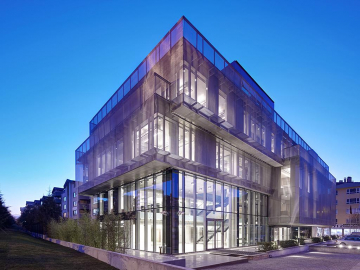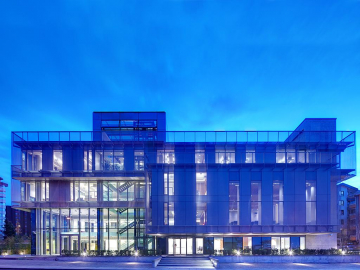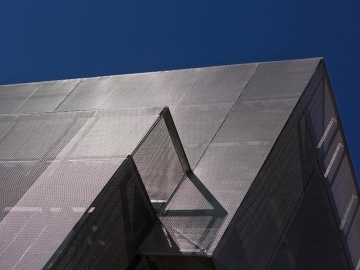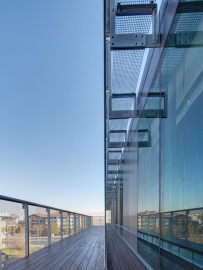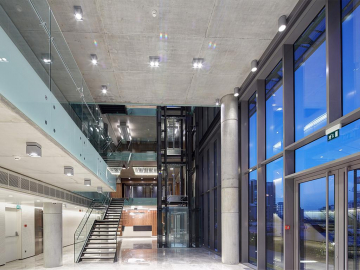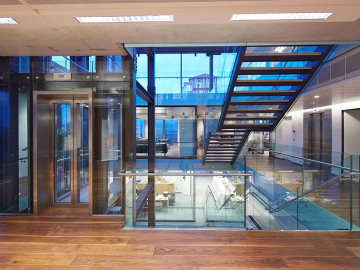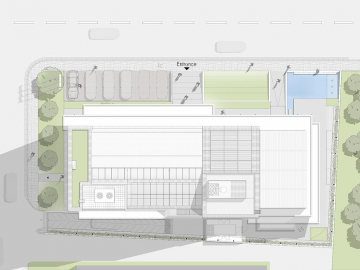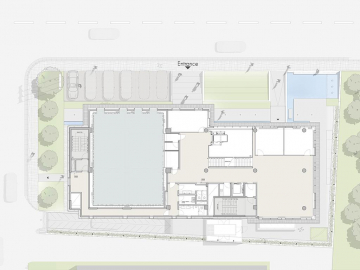Turkish Contractor s Association Building HQ
The Turkish Contractors Association (TCA) was the result of a limited design competition with a brief that placed a great interest in leading environmental design approaches. The completed building is already regarded as a showcase of leading edge environmental design, which has raised the bar in the whole of Turkey. The brief in many ways is typical of an HQ building, which houses essentially an association of contractors, who represent the crème de la crème of the construction industry in Turkey, which is worldwide the second largest. In terms of size of contractors Turkey is placed 2nd only after China. USA holds the third position.
The functions include, apart from offices for administration and guidance, a series of public elements such as a conference hall, and exhibition areas as well as a resource library on a total construction area of 6900 sqm and 1295 sqm land area. The building articulates itself to reveal these functions, and is organised to reflect this as transparently as possible to the outside world. As you move up the building from ground up the increasing degrees of privacy required in the programme positions these elements in a natural hierarchy, placing at the top the most private lounge, and at the bottom the most public exhibition and conference spaces. The atrium cutting through the mass reveals on the other hand all of these functions upon entry, while connecting the building to the street level to the public domain and rising to the top of the whole it also acts as a natural ventilation device for all of the open public spaces. TCA s basic principle of institutional transparency both conceptual and structural defines the design from the beginning.
As the main environmental strategy underground labyrinth system is employed to exploit the diurnal temperature range of the local climate of Ankara, which in summer has a difference of 15-20 degrees between night and day. By using thermal mass this system optimises the buildings environmental performance to maintain occupants comfort in response to changing external temperatures while reducing energy demand. Steel pipes of 150mm diameter are laid within the mass of the concrete slabs to deliver air to chilled beams placed under exposed concrete ceilings. The structural mass of the building surfaces is there fore utilised to not only take advantage of its thermal-mass, but also becomes a ceiling finish from which light is indirectly reflected in to spaces from active chilled beams.
The external skin is made of two layers; the first a classic frameless glass to glass or glass to metal facade panel system. The second is a solar control layer of stainless steel mesh shading. The delicacy of this screen system allows occupants to remain in touch with outside views while giving a responsive density to the mesh varying according to solar orientation. During day-time the screen enables the functional masses to be articulated, while at night the internally lit building reveals the whole, becoming a kind of modern candle that glows gracefully at night. This transparency while inviting you in reinforces the relationship with the public domain.
The project is an integrated design effort, coordinated down to the last detail with experimentation and study based on design/development methods and encouraging the use of local resources and materials and thus contributes to one of Turkeys strongest and most traditional industries.
It is the seamless integration of a number of technologies that makes this LEED Platinum Certificate building innovative: combined, they deliver a high-performance, low-energy building.

